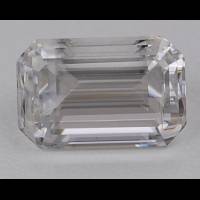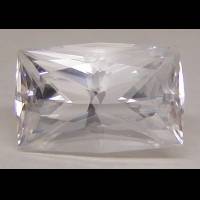Magnesite

Brazil
8.80 carats
© Rarestone.com
Magnesite frequently occurs as translucent, sometimes transparent colourless, white, yellowish to brown or grey masses with an earthy or chalky appearance. This material is cut into cabochons.
Transparent crystals of gem-quality are very rare. The amount of faceted stones is mostly limited to specialized collections.
Magnesite Gemstones by Colour
This table shows the variety of hues this gemstone can be found in. Click on a photo for more information.
Magnesite Gemstones by Size
This table shows distribution of Magnesite gemstone sizes that are listed on this site. This can give a good indication as to the general availability of this gemstone in different sizes.
Contributed photos
Lightest:3.51 cts
Heaviest:17.75 cts
Average:7.89 cts
Total photos:5
Do you have a larger Magnesite? Why not upload a photo?
| General Information | |||||||||
|---|---|---|---|---|---|---|---|---|---|
| Varieties/Types: | |||||||||
| Chemical Formula |
| ||||||||
| Magnesite Treatments | |||||||||
| Dyed to imitate lapis, turquoise (chelsea: common reddish), coral. Acetone test - Blue Chart Gem Identification, Herve Nicolas Lazzarelli, 2010, p 8 | |||||||||
| Physical Properties of Magnesite | |||||||||
| Mohs Hardness | 3.5 to 4.5, Blue Chart Gem Identification (2010) More from other references | ||||||||
| Specific Gravity | 2.92 to 3.12, Blue Chart Gem Identification (2010) More from other references | ||||||||
| Cleavage Quality | Perfect, Gemmological Tables (2004) More from other references | ||||||||
| Fracture | Conchoidal, Gemstones (2009) | ||||||||
| Optical Properties of Magnesite | |||||||||
| Refractive Index | 1.509 to 1.720, Blue Chart Gem Identification (2010) More from other references | ||||||||
| Optical Character | Uniaxial/-, Blue Chart Gem Identification (2010) More from other references | ||||||||
| Birefringence | 0.190 to 0.202, Blue Chart Gem Identification (2010) DoublingMore from other references | ||||||||
| Pleochroism | Nil, Gemstones (2009) | ||||||||
| Dispersion | Nil, Gemstones (2009) | ||||||||
| Colour | |||||||||
| Colour (General) | White, yellow, brown, black, colourless, Gemmological Tables (2004) More from other references | ||||||||
| Transparency | Translucent,Opaque, Gemmological Tables (2004) More from other references | ||||||||
| Lustre | Vitreous,Dull, Gemstones of the world (2001) More from other references | ||||||||
| Fluorescence & other light emissions | |||||||||
| Fluorescence (General) | Blue, green, white common, Blue Chart Gem Identification (2010) | ||||||||
| Fluorescence (Short Wave UV) | Blue green or white fluorescence may be seen with greenish phosphorescence, Gems, Sixth Edition (2006) | ||||||||
| Phosphorescence | Greenish, Blue Chart Gem Identification (2010) | ||||||||
| Crystallography of Magnesite | |||||||||
| Crystal System | Trigonal, Blue Chart Gem Identification (2010) More from other references | ||||||||
| Habit | Massive, Gems, Sixth Edition (2006) More from other references | ||||||||
| Geological Environment | |||||||||
| Where found: | Magnesite occurs as a primary mineral in igneous or sedimentary rocks or may be formed by the metamorphism or alteration of serpentine and peridotite., Gems, Sixth Edition (2006) | ||||||||
| Further Information | |||||||||
| Mineral information: | Magnesite information at mindat.org | ||||||||
| Significant Gem Localities | |||||||||
| |||||||||




